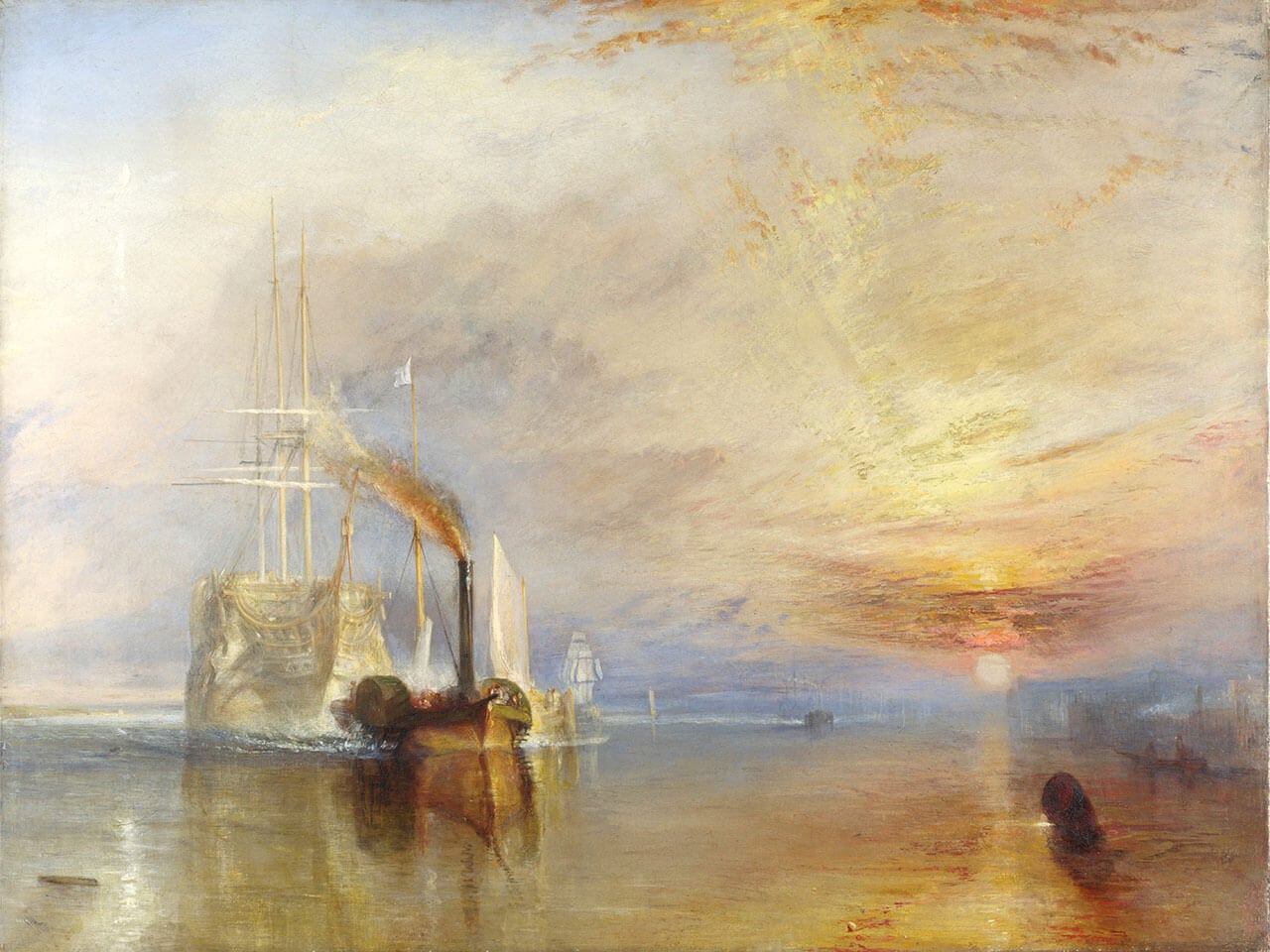 |
| The Fighting Temeraire by J. M. W. Turner (1838) |
Joseph Mallord William Turner the Fighting Temeraire Painting Analysis
 |
| The Slave Ship by J. M. W. Turner (1840) |
 |
| Rain, Steam and Speed – The Great Western Railway by J. M. W. Turner (1844) |
 |
| The Fighting Temeraire Details of Windows, Guy Cables and Boat-painters |
The Fighting Temeraire Meaning Among J. M. W. Turner Paintings
 |
| A Sleeping Woman perhaps Mrs Booth by J. M. W. Turner (1830-1840) |
 |
| The Bay of Baiae, with Apollo and the Sibyl by J. M. W. Turner (1823) |
 |
| Snow Storm: Hannibal and His Army Crossing the Alps by J. M. W. Turner (1812) |
Who Was Turner Influenced by Before the Fighting Temeraire?
 |
| Peace, Burial at Sea by J. M. W. Turner (1842) |
 |
| Dort or Dordrecht: The Dort Packet-boat from Rotterdam Becalmed by J. M. W. Turner (1818) |
When Did Turner Paint the Fighting Temeraire 1839
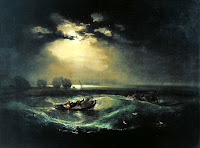 |
| Fishermen at Sea by J. M. W. Turner (1796) |
 |
| The Ninth Wave by İvan Aivazovsky (1850) |
Who Was the Captain of the Fighting Temeraire at Trafalgar?
 |
| The Battle of Trafalgar, 21 October 1805 by J. M. W. Turner (1822-1824) |
 |
| Portrait of Sir Eliab Harvey by Lemuel Francis Abbott (1806) |
The Fighting Temeraire and other Ships at Trafalgar Battle
 |
| The Death of Nelson, 21 October 1805 by Arthur William Davis (1807) |
 |
| The Fighting Temeraire Detail of Nelson’s Trafalgar Coat |
The Fighting Temeraire Tugged to Her Last Berth to Be Broken Up, 1838
 |
| Temeraire Lying at Rotherhithe by William Beatson (1838) |
 |
| England: Richmond Hill, on the Prince Regent’s Birthday by J. M. W. Turner (1819) |
 |
| Sunrise, with a Boat between Headlands by J. M. W. Turner (1840-1845) |
 |
| Norham Castle on the Tweed by J. M. W. Turner (1822-1823) |
Mr. Turner the Fighting Temeraire Romanticism Style
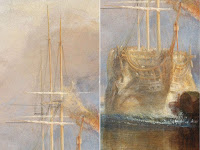 |
| The Fighting Temeraire Details of Masts with Furled Sails and Vat Dye |
 |
| The Fighting Temeraire Detail of Blue Triangle Covered with Clouds |
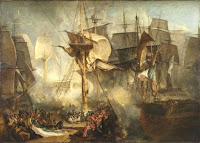 |
| The Battle of Trafalgar, as Seen from the Mizen Starboard Shrouds of the Victory by J. M. W. Turner (1806-1808) |
 |
| Jewish Wedding in Morocco by Eugène Delacroix (1839) |
The Fighting Temeraire Poem, Thomas Campbell’s Ye Mariners of England
 |
| The Fighting Temeraire Details of Steam Tug, White Flag and Thames Boat |
Etchings and Prints of the Fighting Temeraire Turner Reproductions
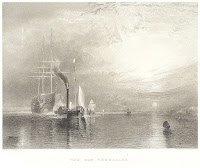 |
| The Fighting Temeraire after Turner by James Tibbits Willmore (1845) |
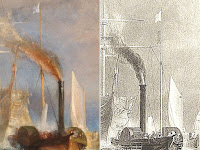 |
| The Fighting Temeraire Details of Funnel, Pole and Willmore’s Version |
Where is the Fighting Temeraire National Gallery Room 34
 |
| The Hay Wain by John Constable (1821) |
 |
| Dido Building Carthage by J. M. W. Turner (1815) |
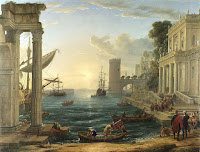 |
| Seaport with the Embarkation of the Queen of Sheba by Claude Lorrain (1648) |
The Fighting Temeraire Symbolism Over the Industrial Revolution
 |
| The British Union Jack for Naval Forces, White Ensign |
 |
| The Oath of the Horatii by Jacques-Louis David (1784) |
 |
| Snow Storm: Steam-boat off a Harbour’s Mouth by J. M. W. Turner (1842) |
 |
| Staffa, Fingal’s Cave by J. M. W. Turner (1831) |
The Fighting Temeraire Style and Turner’s Color Palette
 |
| The Fighting Temeraire Details of Second Steam Tug and Life Buoy |
 |
| Norham Castle, Sunrise by J. M. W. Turner (1845) |
 |
| The Fighting Temeraire Details of Crescent Moon and White Sun |
Small Details in the Fighting Temeraire William Turner Utilized
 |
| The Fighting Temeraire Detail of Removed Masts within Naval Cemetery |
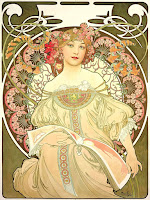 |
| Daydream by Alphonse Mucha (1897) |
J. M. W. Turner the Fighting Temeraire Books in Academic Aspect
The Fighting Temeraire is not only a
Romantic Period painting, but also a symbol that introduces the beginning of
the Industrial Age. For that reason, the stunning masterpiece has been subject
to various academic research from different fields, including art critics in
regards to its painter, movement, use of color, and content. The leading
documents can be listed for the favorite painting of UK and the artist who
painted the Fighting Temeraire as: Matthew Brennan’s “Wordsworth, Turner, and
Romantic Landscape: A Study of the Traditions of the Picturesque and the
Sublime” published by Camden House, Columbia, S.C. in 1987; John Gage’s “Color
in Turner: Poetry and Truth” published by Frederick A. Praeger, New York in
1969; William Gaunt’s “Turner (Colour Plate Books)” published by Phaidon Press
Ltd, Oxford in 1971; and Jack Lindsay’s “J. M. W. Turner: His Life and Work: A
Critical Biography” published by Cory, Adams & Mackay in 1966. Moreover, the National Gallery of Art’s video carousel is far explanatory.
History of the Fighting Temeraire 1839 Painting
 |
| Self-Portrait by J. M. W. Turner (1799) |
Influence of the Fighting Temeraire on Literary and Visual Arts
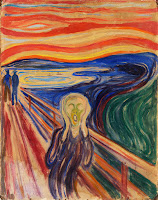 |
| The Scream by Edvard Munch (1893) |
 |
| The Fighting Temeraire Detail of Skyfall Daniel Craig and Javier Bardem |
Facts About the Fighting Temeraire Painting
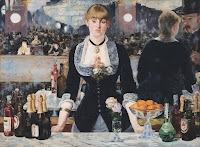 |
| A Bar at the Folies Bergère by Édouard Manet (1882) |
 |
| Mr and Mrs Clark and Percy by David Hockney (1971) |
J. M. W. Turner’s The Fighting Temeraire Value and Size
 |
| Rome, from Mount Aventine by J. M. W. Turner (1835-1836) |
The Fighting Temeraire by J. M. W. Turner
 Reviewed by Articonog
on
July 22, 2023
Rating:
Reviewed by Articonog
on
July 22, 2023
Rating:
 Reviewed by Articonog
on
July 22, 2023
Rating:
Reviewed by Articonog
on
July 22, 2023
Rating:





No comments: